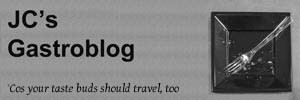The classic light baked custard using Anton Mossiman’s newspaper-in-the-bain-marie technique.
Planning
| serves: | 6 |
| preparation time: | 10 mins |
| cooking time: | 1¼ hours |
Ingredients
- 4 oz sugar
- 2½ fl oz water
- 1 pt milk
- 3½ oz sugar
- ½ vanilla pod
- 2 whole eggs
- 2 egg yolks
- 1 newspaper
Method
Preheat the oven to 150°C/300°F/gas 2.
First, make the caramel. In a heavy-based small saucepan, heat the 4 oz sugar with the water over low heat stirring until the sugar is dissolved completely. Increase the heat to moderate and bring the syrup to a boil. Cook until it turns a light nut-brown colour. Immediately, remove the caramel from the heat and pour it into 6 individual ramekins to line the bottom.
Now make the custard. In a medium heavy based pan, bring the milk and the 3½ oz sugar to the boil, stirring to dissolve the sugar. Add the vanilla, remove from the heat, cover and allow to infuse for 20 minutes. While the milk is infusing, beat the eggs and egg yolks together in a mixing bowl until they thicken and become pale yellow. Remove the vanilla pod from the infused milk and, beating continuously, add the milk to the beaten eggs. Pour the mixture into a suitable jug and fill the ramekins. Skim off any froth which rises to the top.
Prepare a bain marie. Line the bottom of a deep baking or roasting pan with the newspaper, folded to fit as neatly as possible. (This protects the bottom of the ramekins from any severe heat while the custard is baking.) Place the ramekins on top of the newspaper and add enough boiling water to come half way up the sides of the ramekins. Bake in the lower part of the oven for about 40 minutes or until the centre of the custard is just set. (The water should not simmer; if it does, reduce the heat.) Remove the dishes from the water (carefully) and allow them to cool completely befoore chilling for 1 hour in the refrigerator.
To serve, run a knife around the edges of the ramekins, place a serving plate on top and invert to turn out the crème caramel.
